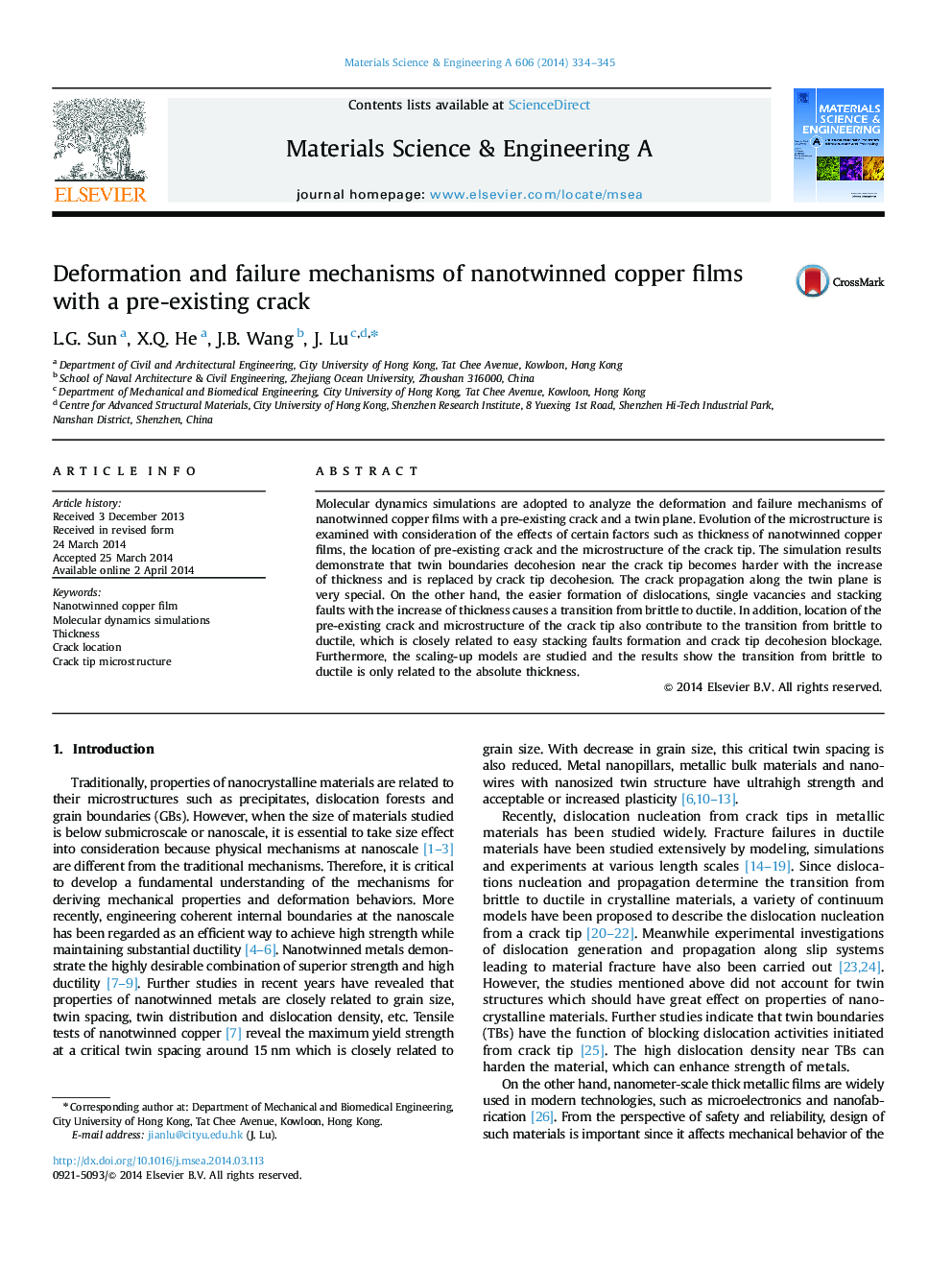| Article ID | Journal | Published Year | Pages | File Type |
|---|---|---|---|---|
| 1575063 | Materials Science and Engineering: A | 2014 | 12 Pages |
Abstract
Molecular dynamics simulations are adopted to analyze the deformation and failure mechanisms of nanotwinned copper films with a pre-existing crack and a twin plane. Evolution of the microstructure is examined with consideration of the effects of certain factors such as thickness of nanotwinned copper films, the location of pre-existing crack and the microstructure of the crack tip. The simulation results demonstrate that twin boundaries decohesion near the crack tip becomes harder with the increase of thickness and is replaced by crack tip decohesion. The crack propagation along the twin plane is very special. On the other hand, the easier formation of dislocations, single vacancies and stacking faults with the increase of thickness causes a transition from brittle to ductile. In addition, location of the pre-existing crack and microstructure of the crack tip also contribute to the transition from brittle to ductile, which is closely related to easy stacking faults formation and crack tip decohesion blockage. Furthermore, the scaling-up models are studied and the results show the transition from brittle to ductile is only related to the absolute thickness.
Related Topics
Physical Sciences and Engineering
Materials Science
Materials Science (General)
Authors
L.G. Sun, X.Q. He, J.B. Wang, J. Lu,
